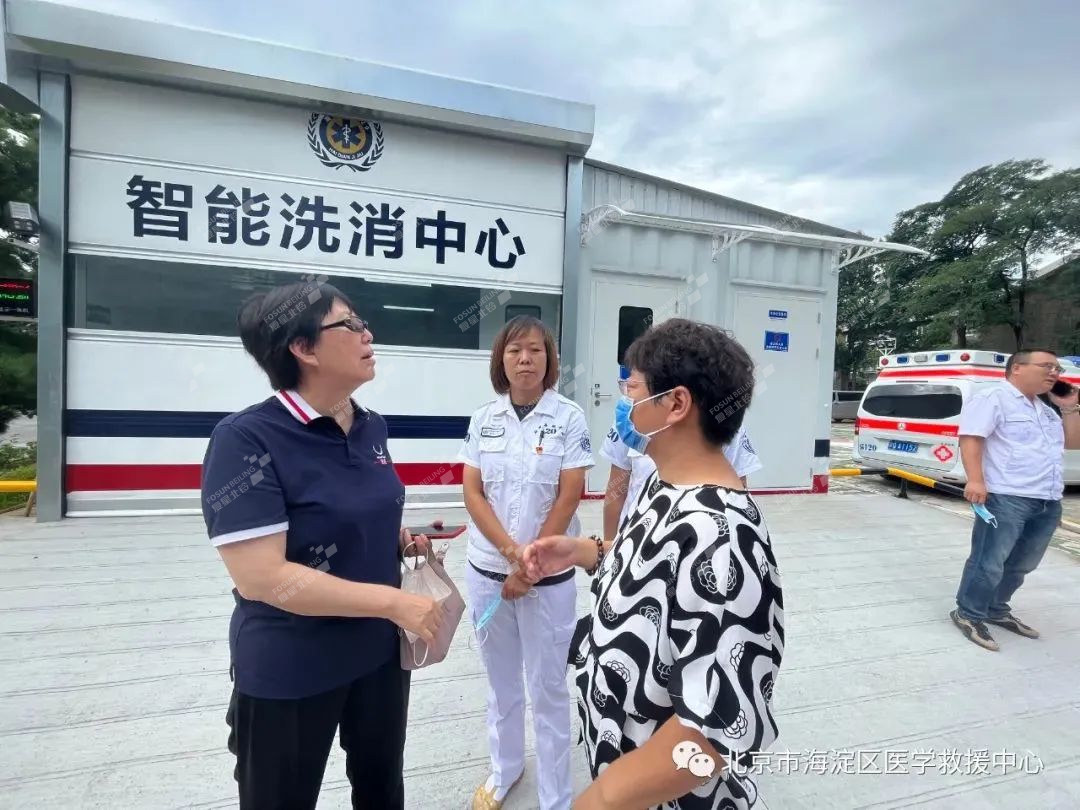In order to continuously improve the level of epidemic prevention and control in pre-hospital emergency work in Haidian District, according to the "Ambulance Decontamination Station Construction Standards", the Haidian District Medical Rescue Center overcame the adverse effects of construction period, short procurement time for special decontamination equipment, and hot weather, and scientifically coordinated epidemic prevention and control with project advancement. After more than 40 days of hard work, the ambulance decontamination station in northern Haidian District (Shichuang aerosol decontamination cabin) was completed in mid-August 2022. On the morning of August 23, Director Wu Yinghong of the Beijing Hospital Infection Management Quality Control and Improvement Center and Director Shu Yan of the Beijing Emergency Center Hospital Infection Office conducted a municipal-level acceptance of the decontamination station, and it was allowed to operate after passing the acceptance.

The acceptance work was led by Secretary/Director Cheng Hongdan of the Haidian District Medical Rescue Center, and accompanied by Deputy Secretary/Deputy Director Cao Xufeng, Deputy Director Wang Lei, and staff from the center's office, nursing department, and driver team.

The expert group conducted on-site inspections of the facility management and job system information of the decontamination station; inspected the infrastructure construction, medicines and equipment, and randomly asked questions about the work process. After careful assessment by the municipal expert group, the overall construction of the decontamination station in our district was recognized, and suggestions for improvement were made on the disinfection process in the decontamination cabin, the posting of the schematic diagram of the personnel removal area, the entrance and exit of medical waste, and the placement of garbage cans.

In the future, our district will use the help of hospital infection experts to make acceptance suggestions, take advantage of the opportunity to consolidate and improve the work of pre-hospital disinfection stations, strengthen the deployment of professional equipment, enhance the hospital infection prevention and control skills of medical staff, improve the soft power of ambulance disinfection work, and effectively reduce the risk of cross-infection caused by pre-hospital emergency infectious disease transfer, and build a solid barrier for epidemic prevention and control in our district.